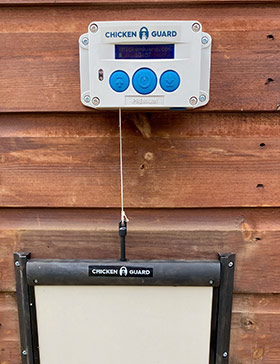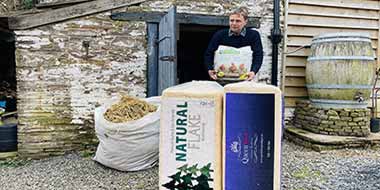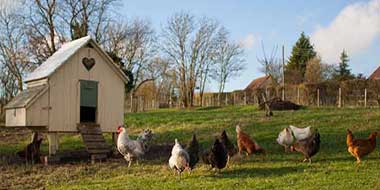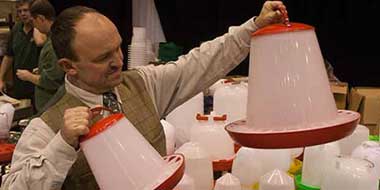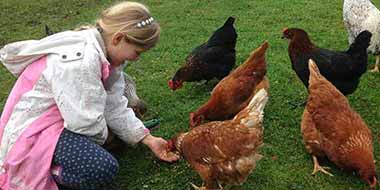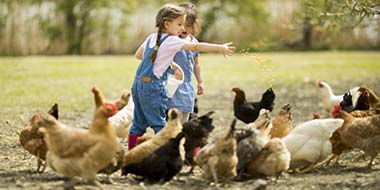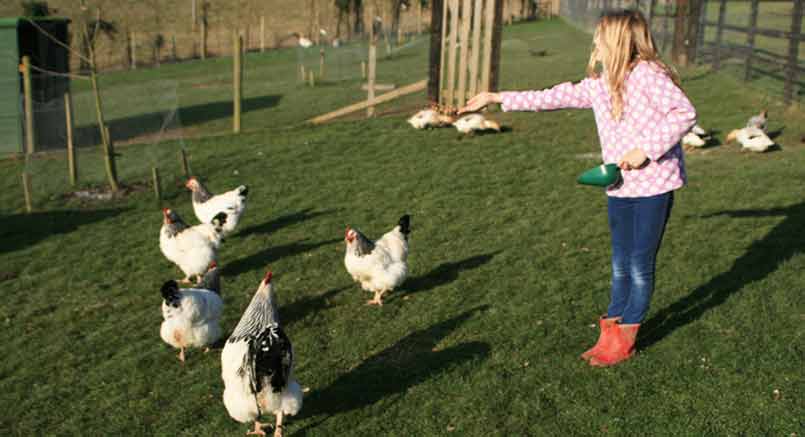
Looking after chickens is relatively easy, but like all animals, they still need care and consideration. Follow these ten steps to looking after chickens, and you’ll soon be collecting eggs from your happy hens!
Step 1: Find out whether you can keep chickens
First, you need to make sure there are no clauses in your house deeds, rental agreement or local bye-laws against keeping animals (even pet chickens are regarded as livestock).
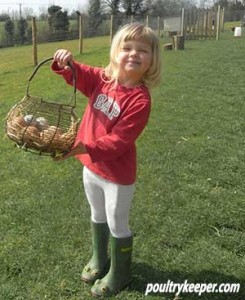 Also, consider your lifestyle and whether you’ll have time to look after chickens properly.
Also, consider your lifestyle and whether you’ll have time to look after chickens properly.
Don’t forget that you will need to make arrangements for their care when you are away from home; I previously provided some tips for chickens and holidays here.
There is also more information on the laws, rules and regulations for UK residents on this page here if you need it.
Step 2: Decide how you will keep your chickens
Chickens destroy a patch of ground very quickly – a traditional chicken run soon becomes a muddy, disease-ridden eyesore.
This can be avoided by:
- Dividing the run into two, resting each half alternately.
- Using a moveable chicken-house and run.
- Covering a small run’s surface with a thick layer of scratching material (i.e. hardwood chips). These can be cleaned and replaced regularly.
- Letting the chickens free-range – although they will do some damage to the garden and may need protection from dogs and predators. Electric poultry netting is useful in securing chickens.
- Overcrowding causes stress-related problems and sickness. If space is tight, keep just two or three hens and give them us much room as you can.
Step 3: Choose a chicken house
There is a wide selection of styles and prices – research thoroughly to avoid costly mistakes.
A chicken’s basic needs are for a secure, weatherproof house, with perches for roosting and nest-boxes for eggs. A human’s basic needs are for a coop with easy access, especially when cleaning it out.
Check the following:
- The house and run must be robust enough to keep out the large and powerful and small and agile. Chicken wire is only proof against chickens!
- Ventilation is essential.
- There should be 25-30cm of perch for each average-sized chicken.
- At least one square metre of run space per chicken is required – double that is preferable. A raised house allows chickens to use the area underneath.
- Moveable housing should be easy to manoeuvre. Wheels are normally required for this.
- Be careful of second-hand housing, which may contain dormant parasites such as red mite.
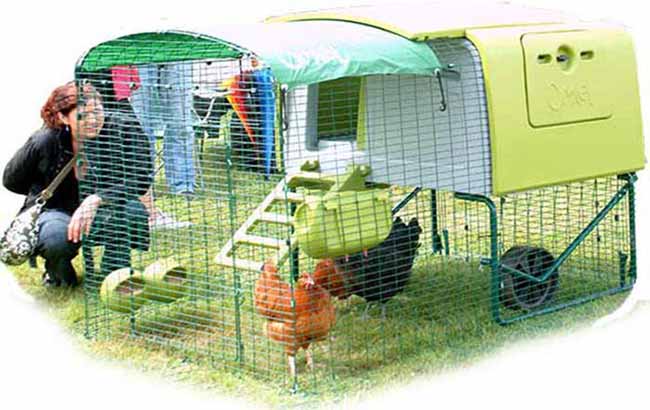
A movable plastic Eglu Chicken house and run made by Omlet
Cheap chicken houses (usually imported from China) aren’t ideal because they don’t last more than a couple of years and aren’t strong enough to keep a determined predator out.
For further information on what to look for in a chicken coop, see the Ultimate Guide to Chicken Houses.
Step 4: Select a breed
Chickens come in a vast assortment of shapes, sizes and characters.
All of them lay eggs, but productivity varies enormously. Again it’s worth doing some research to find the right chicken for you.
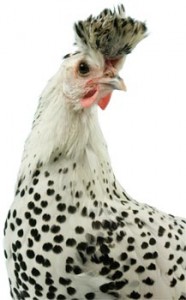 Will you keep traditional, pure-breed hens (some are very beautiful or unusual) or modern hybrids developed for maximum output?
Will you keep traditional, pure-breed hens (some are very beautiful or unusual) or modern hybrids developed for maximum output?
Decide whether your main aim is eggs, meat, children’s pets, attractive addition to the garden – or all of these. Some chickens are all-rounders, and some are specialists.
Photo Right: An Appenzeller Spitzhauben Chicken, a rare breed that has been making a come back in recent years.
Step 5: Get the kit
Apart from the chickens and their house, you will need some basic equipment:
- Buy a well-designed feeder to keep the feed dry and prevent waste.
- A purpose-made drinker helps in providing constant, clean water.
- Obtain a dry, vermin proof-container for storing feed.
- Acquire a shovel, bucket and stiff brush for cleaning-out duties – a scraper is useful too.
- Poultry Shield is a detergent cleaner used inside the chicken house. It can remove red mite, a widespread parasite.
- Provide a dust-bath. A plastic box filled with fine soil or play sand will do the job.
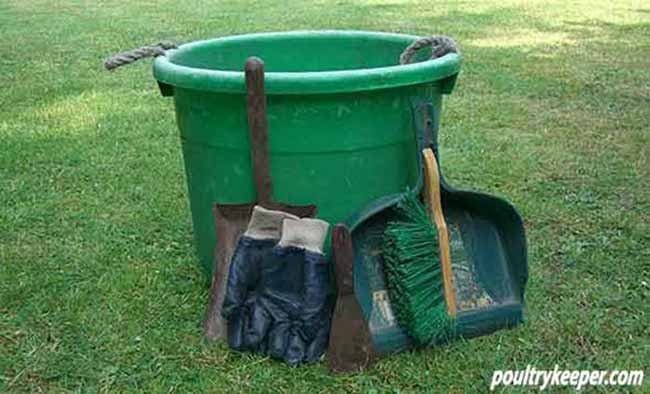
A range of equipment used for cleaning out the chicken house.
Poultry supply stores offer a tempting range of items, and quality varies. The cheapest can sometimes prove a false economy, so shop around carefully.
Step 6: Purchase some feed
It is now illegal in the UK to feed chickens with anything prepared in a kitchen.
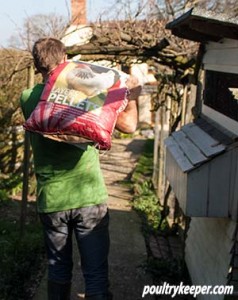 Manufactured chicken feed usually comes as pellets or mash and will provide your chickens with a balanced diet.
Manufactured chicken feed usually comes as pellets or mash and will provide your chickens with a balanced diet.
Corn is an extra treat – feed sparingly in the afternoons, so the chickens eat their main rations first.
If you are unsure about feeding, then there is more information in Tim’s Guide to Feeding Chickens.
Chickens swallow little stones to grind their food down. Supply a dish of flint grit (also called insoluble grit), so your chickens can help themselves with what they need.
Chickens with no access to grass will appreciate some green vegetables, hang them up, so they don’t trample on them, and to provide a distraction. If you hang them slightly above their reach, they will jump for them getting some valuable exercise too!
Step 7: Choose the bedding
Spread a layer of dust-free, absorbent bedding over the henhouse floor to help with cleaning and help chickens in cold weather.
Dust-extracted shavings are a popular choice, but there are several other options (see the different types of bedding material available here). Avoid hay or wood bark as they can harbour harmful moulds and spores.
Use soft bedding material such as straw for the nest-boxes.
Step 8: Buy your chickens!
Not you are well prepared for looking after chickens; it’s time to go out and get some!
Most popular pure-breeds have dedicated clubs (often with websites) and will help with finding a breeder.
Hybrid hens are popular, and many suppliers advertise online (the poultry for sale pages on this website, for example). Several organisations are also dedicated to re-homing ex-battery hens (a list of these is on the Ex-Battery Hens For Sale pages.)
Buying from auctions or markets can be risky! If you go down this route, go to a well-organised sale where a vet checks the birds for good health.
Look around carefully when visiting your intended supplier.
The birds should be kept in clean, spacious conditions. Do they look healthy – alert and bright-eyed?
Be wary of any chickens that are hunched and miserable, as this is a sign of sickness.
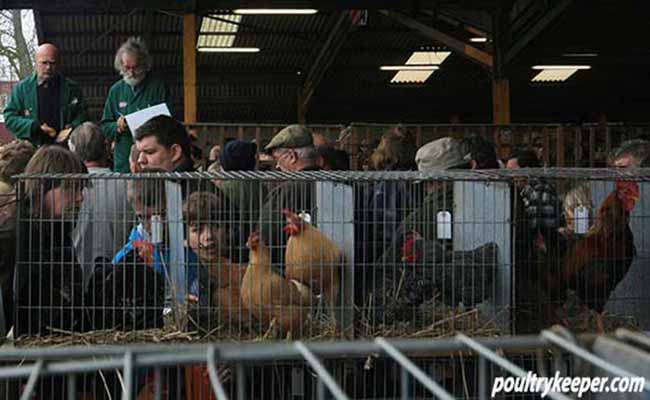
The supplier should be happy to give advice and take back any unhealthy birds after a few days. Be prepared to wait for a popular breed or hybrid to become available – short-cuts can lead to sickly chickens!
Keep the chickens’ transfer to their new home as calm as possible. Make sure they travel comfortably and don’t get overheated. Have everything ready, and shut them into their house for a few hours so they can settle down quietly (don’t forget to provide food and water).
Step 9: How to care for your chickens
Let your chickens out each morning, give them food and water, and check they are all in good health.
Keep an eye on the drinker in very hot or freezing weather. A laying hen needs about 500ml a day. In the evening, collect eggs, clear away food and shut the chickens into their house – they don’t eat or drink when roosting.
Chickens go to roost at dusk. This could be mid-afternoon in winter or late at night in high summer. If you cannot be at home to shut them into their house, it’s worth installing an automatic door closer to keep them safe from predators.
Automatic
Door Opener
& Closer
The most likely time for predators like foxes to visit is at night, so your chickens must be locked up safely from dusk until dawn.
If you are worried about being at home in time to lock up your chickens, then a ChickenGuard automatic chicken house door might be the answer.
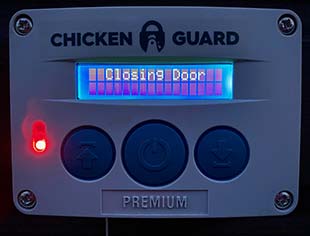
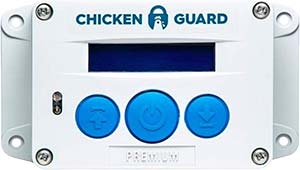
Clean out the coop at least once a week. Remove bedding and scrape out droppings, putting down fresh bedding.
In fine weather, give the house an occasional scrub with poultry disinfectant like PoultryShield.
When cleaning the house, check for any red mite evidence (little heaps of grey dust around the ends of the perches and small grey or red mites hidden beneath them). This parasite can debilitate or kill chickens, so act quickly at the first sign of them.
Green algae are poisonous to chickens, so keep the drinker clean – and give the feeder a regular wash too.
A small fixed run will also need frequent cleaning and maintenance. Shift moveable runs as often as necessary.
Keep ensuring everything remains weather and predator-proof. Are there any signs of tunnelling or gnawing around the house or run? Are there any signs of rats? Deal with repairs quickly before they become a problem.
It’s essential to establish a worm testing regime. (Kits are now available to order online with results by email) and to frequently check that every bird is healthy and free from parasites.
Chickens are good at hiding illness, so it’s up to the owner to keep an eye on them. Get to know your chickens, so you will quickly notice if anything is wrong.
Step 10: Waiting for eggs
Even if you are looking after chickens perfectly, there is a good chance they won’t be laying for a while. Don’t despair! Hens are sold at ‘point-of-lay,’ which means they are almost the right age to produce eggs – but it depends on the time of year and when they were hatched. Pure-breeds are unlikely to start laying in winter, so if you buy young hens in autumn, it may be early spring before you see an egg.
Your hens will give you eggs for about a year, then stop while they go through their first annual moult. Egg-laying starts again when they have re-feathered, although pure-breeds usually moult in autumn, and some may not lay again until the following spring.
A hen’s first eggs are small, and there may be oddities until her system settles down. Once she is into her laying stride, eggs become larger and more regular until she moults. When she starts laying again, the eggs are usually a little larger than before.
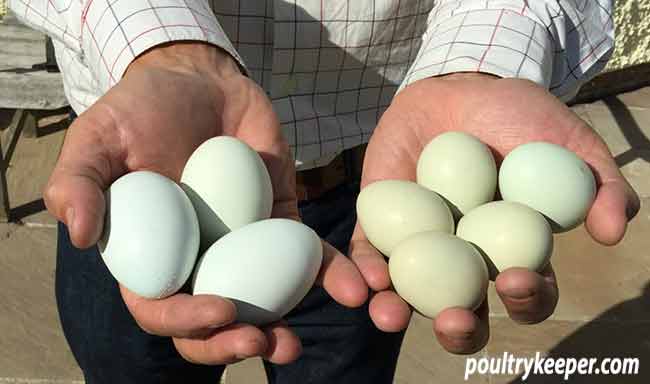
Keep learning!
Looking after chickens is fairly easy when you know the basics, and this overview of chicken-keeping was designed to help you get started on this fascinating hobby. There is a wealth of further information on this website, so head up to the Keeping Chickens section for more!
The more you learn – the more you will want to know!

